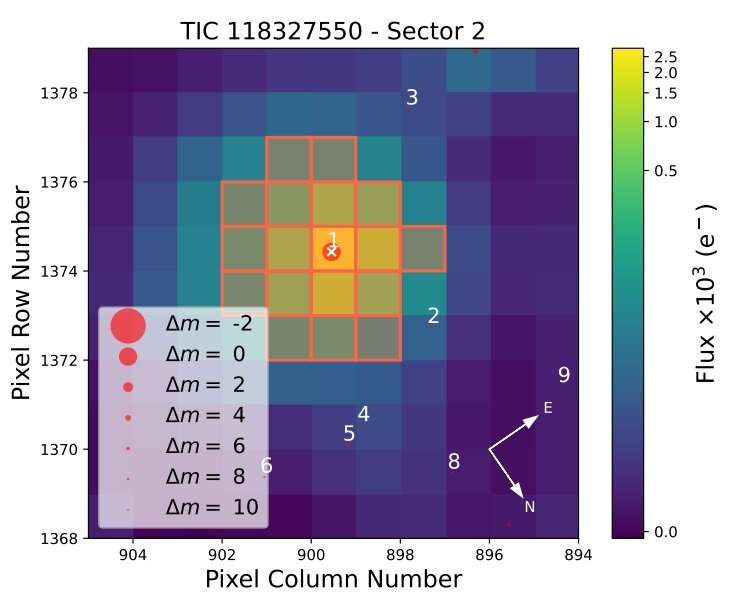May 16, 2023 report
This article has been reviewed according to Science X's editorial process and policies. Editors have highlighted the following attributes while ensuring the content's credibility:
fact-checked
preprint
trusted source
proofread
Astronomers discover an unusually low-density super-Earth

An international team of astronomers reports the detection of a new "super-Earth" exoplanet using NASA's Transiting Exoplanet Survey Satellite (TESS). The newfound alien world, designated TOI-244 b, turns out to have an unusually low density. The finding was reported in a paper published May 8 on the arXiv preprint server.
TESS is conducting a survey of about 200,000 of the brightest stars near the sun with the aim of searching for transiting exoplanets. So far, it has identified nearly 6,600 candidate exoplanets (TESS Objects of Interest, or TOI), of which 331 have been confirmed so far.
Now, a group of astronomers led by Amadeo Castro-González of the Spanish Astrobiology Center in Madrid, Spain, has confirmed another TOI monitored by TESS. They report that a transit signal was detected in the light curve of TOI-244 (also known as GJ 1018)—a nearby bright, early type M-dwarf star of spectral type M2.5 V, nearly half the size and mass of the sun. The planetary nature of this signal was confirmed by radial velocity measurements conducted with the ESPRESSO spectrograph mounted on the European Southern Observatory's Very Large Telescope (VLT) in Chile.
"Based on the transit signal detected from TESS data, we carried out an intensive radial velocity campaign with ESPRESSO in order to confirm its planetary nature, obtain a precise mass measurement, as well as to search for additional planets," the researchers wrote.
According to the study, TOI-244 b has a radius of 1.52 Earth radii, while its mass is about 2.68 Earth masses, yielding a density at a level of 4.2 g/cm3. The planet orbits its host every 7.4 days, at a distance of about 0.056 AU from it, and its equilibrium temperature is estimated to be some 458 K.
Based on the findings, Castro-González's team classified TOI-244 b as a "super-Earth." Such planets are more massive than Earth but do not exceed the mass of Neptune. Although the term "super-Earth" refers only to the mass of the planet, it is also used by astronomers to describe planets bigger than Earth but smaller than the so-called "mini-Neptunes" (with radiuses between two to four Earth radii).
The results suggest that TOI-244 b is composed of iron and silicates in a proportion similar to that of the Earth. However, the planet is less dense than the majority of super-Earths of its size. The density of TOI-244 b is also below what would be expected for an Earth-like composition.
The researchers assume that the low density of TOI-244 b is related to the presence of a significant amount of volatile elements.
"In that sense, we find that atmospheric loss processes may have been very efficient to remove a potential primordial hydrogen envelope, but high mean molecular weight volatiles such as water could have been retained," the authors of the paper concluded.
The astronomers added that TOI-244 b is an excellent target for future atmospheric studies, due to its unusual properties and the likely presence of an extended atmosphere.
More information: Castro-González et al, An unusually low-density super-Earth transiting the bright early-type M-dwarf GJ 1018 (TOI-244), arXiv (2023). DOI: 10.48550/arxiv.2305.04922
Journal information: arXiv
© 2023 Science X Network





















